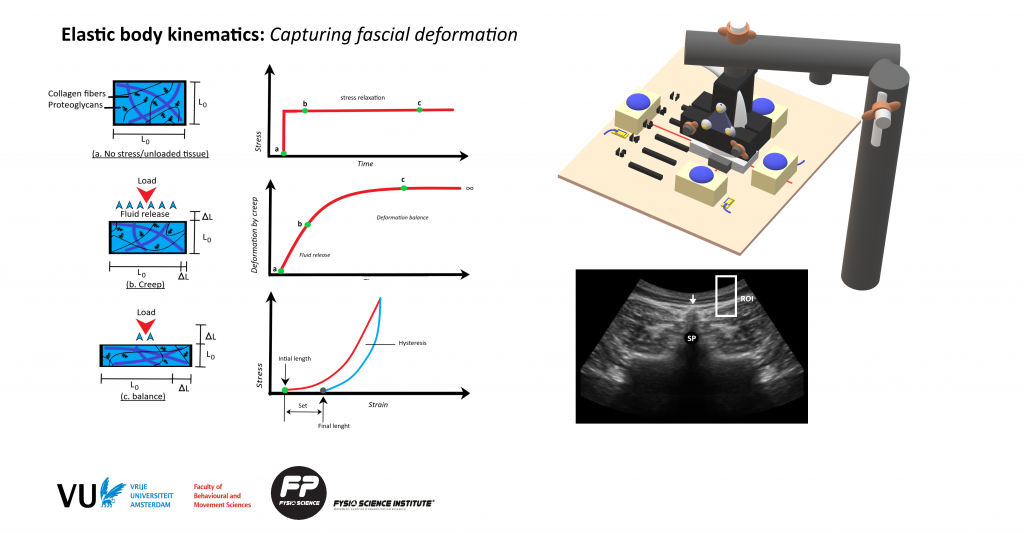Elastic body kinematics: Fascial deformation

Myofascial force transmission
It is hypothesized that fascia can transmit force to the muscles and vice versa. This is also known as myofascial force transmission [1]. An interesting part of this myofascial force transmission is the extra-muscular myofascial force transmission, which describes force transmission between muscles and extra-muscular connective tissues [2]. We are interested in the force transmission between the superficial fascia into the deep back fascia (interfascial force transmission).
Fascial deformation
External stress causes strain/tension, deformation, and displacement and can be explained by elastic body kinematics. There are 4 types of strain that can explain the tensional deformation by force stress, evaluated with the elastic body kinematics: (1) compression stress, (2) tensile stress, (3) shear stress, and (4) torsional stress. We have developed a design set-up to capture fascial deformation in terms of elastic body kinematics.
Capturing fascial deformation
This study design is organized in such a way that we will be able to understand the biomechanical relationship between the superficial fascia, deep fascia, and muscles as a functional system to control for disturbing variables. This is one of our set-ups of designs to detect the influence of the interfascial force transmission, utilizing ultrasonography.
Robbert van Amstel
